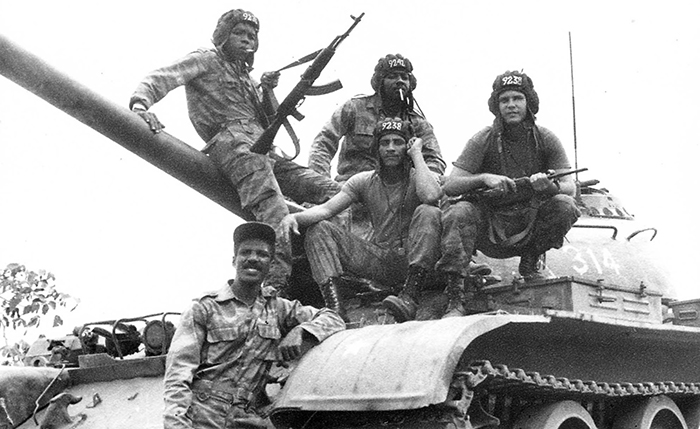
The famed (and feared) Gurkhas from Nepal have been fighting in Britain’s wars for nearly 200 years. In that time, they have gone up against everyone from the Germans and Japanese to the Argentines and the Taliban. But now it seems the brigade’s very existence is in jeopardy. And this time, the threat isn’t coming from a battlefield foe.
According to a story in yesterday’s Toronto Star newspaper that was picked up from The Los Angeles Times, British military spending cuts may soon be thinning the ranks of the famous brigade. Worse, political posturing from the home government in Nepal could prevent the legendary mercenary army from serving under foreign employers.
“We fought many enemies,” one former Gurkha told theTimes. “But our politicians in Nepal are the worst.”
According to the story, the government in Nepal claims it is backing off any plans to revoke the Gurkhas’ eligibility to fight under the Union Jack, but members of the famous brigade are still fearful that the ruling party may yet sideline them.
Originally known as Gorkhas, the small ethnic minority group hails from a tiny rugged region Nepal. Gurkhas derive their name from a legendary 8th century Hindu holy warrior. When soldiers from the British East India Company first encountered Gurkhas in battle in 1815, they found them to be such a tough enemy that when they had finally subdued Nepal, they offered the surviving warriors a place in their army. The relationship between the British Army and the Gurkhas has continued since.
After serving the British faithfully in India throughout the 19th Century, the notorious brigade saw action in such places as the Boxer Rebellion in China, the Gallipoli campaign in 1915, as well as Borneo, Singapore, and Italy in the Second World War.
In that time, Gurkhas earned themselves a reputation for toughness, discipline and fearlessness that was virtually unrivalled. One general once remarked that “anyone who says he doesn’t fear death is either lying or a Gurkha.”
Interesting facts about the Gurkhas:
- The trademark weapon of the Gurkhas is the kukri curved blade, a sort of hybrid between a machete and a boomerang. The 45 inch weapon is sacred and according to tradition must draw blood each time it is unsheathed — if not an enemy’s, then the owners’ own will do.
- A quarter million Gurkhas served the British in World War Two – 2,700 were awarded medals for bravery and 32,000 were killed in battle.
- 13 Gurkhas have won the Victoria Cross, the British military’s highest medal for bravery.
- Today only 3,200 Gurkhas serve in the British Army.
- Tens of thousands of Nepalese aged 17 to 21 vie for about 170 openings in the brigade annually.
- To be considered, a candidate must do at least 70 sit ups in two minutes and run uphill carrying 60 lbs. for 40 minutes.
- According to the BBC, Prince Harry lived with a Gurkha unit for 10 weeks when he served in Afghanistan.
- Until 2009, Gurkhas were paid less than British soldiers. Now they earn the same pay and receive similar pensions.
- In 2010, a Gurkha serving in Afghanistan was reprimanded after returning to base with the severed head of a Taliban insurgent. He claimed he wanted to prove to his superiors that his mission had been a success.
To read the complete story, click here. And for more on the Gurkhas, visit this BBC profile of the unit.










Reblogged this on Battle Bytes.
one man army….
水着 激安 ブランド